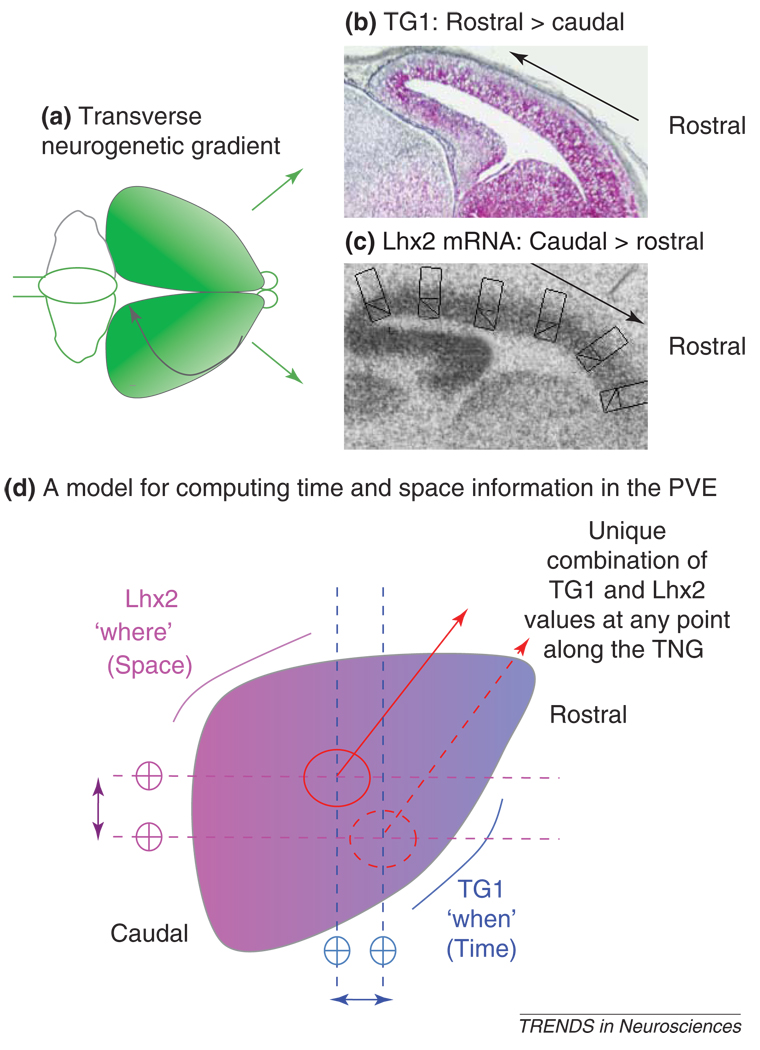Figure 1.
Neocortical neurogenesis proceeds according to a transverse neurogenetic gradient (TNG) that is initiated rostrolaterally and propagates caudomedially in the direction of the curved black arrow in (a). The TNG can be represented as a gradient in the length of the G1 phase of the cell cycle (TG1) as well as a gradient in the expression of mRNA for the transcription factor Lhx2 in the ventricular zone. Thus, in midsagittal sections from an E14 mouse forebrain, with the section plane approximately aligned with the direction of the TNG, the TG1 values are expressed as a high rostral to low caudal gradient (b), while the Lhx2 mRNA expression runs in the opposite direction: high caudal to low rostral (c). The points of intersections of these two gradients in the neocortical pseudostratified ventricular epithelium (PVE) represent unique values along the TNG (d), which might be sufficient to inform a neocortical cell lineage at all times both the time ('when' in the layer VI to II neuron origin sequence) and space ('where' in the PVE with respect to a lineage’s neighbor along the TNG). In (d) the PVE is represented as a flat sheet and the TG1 and Lhx2 mRNA expression gradients are colored blue and magenta, respectively. Two points of intersections of the TG1 and Lhx2 mRNA gradient are illustrated to show that each intersection can represent a unique value.

